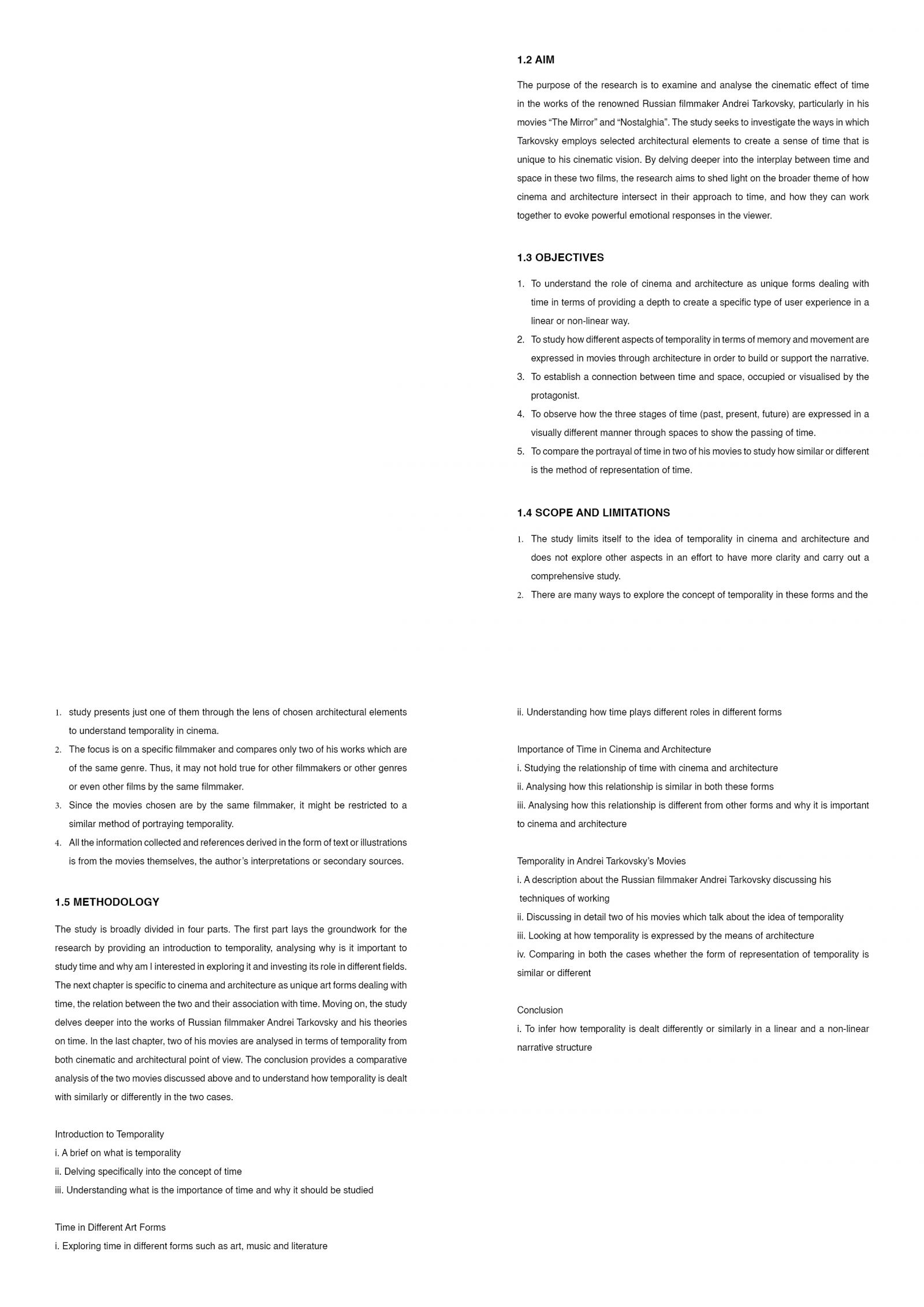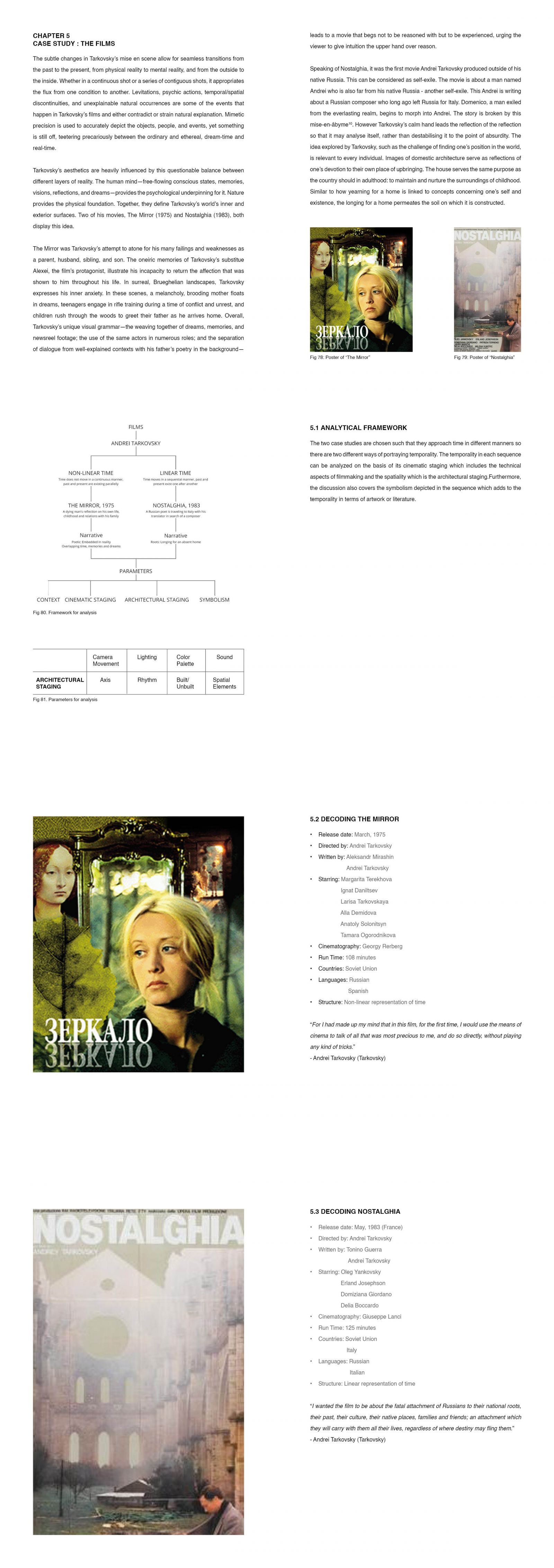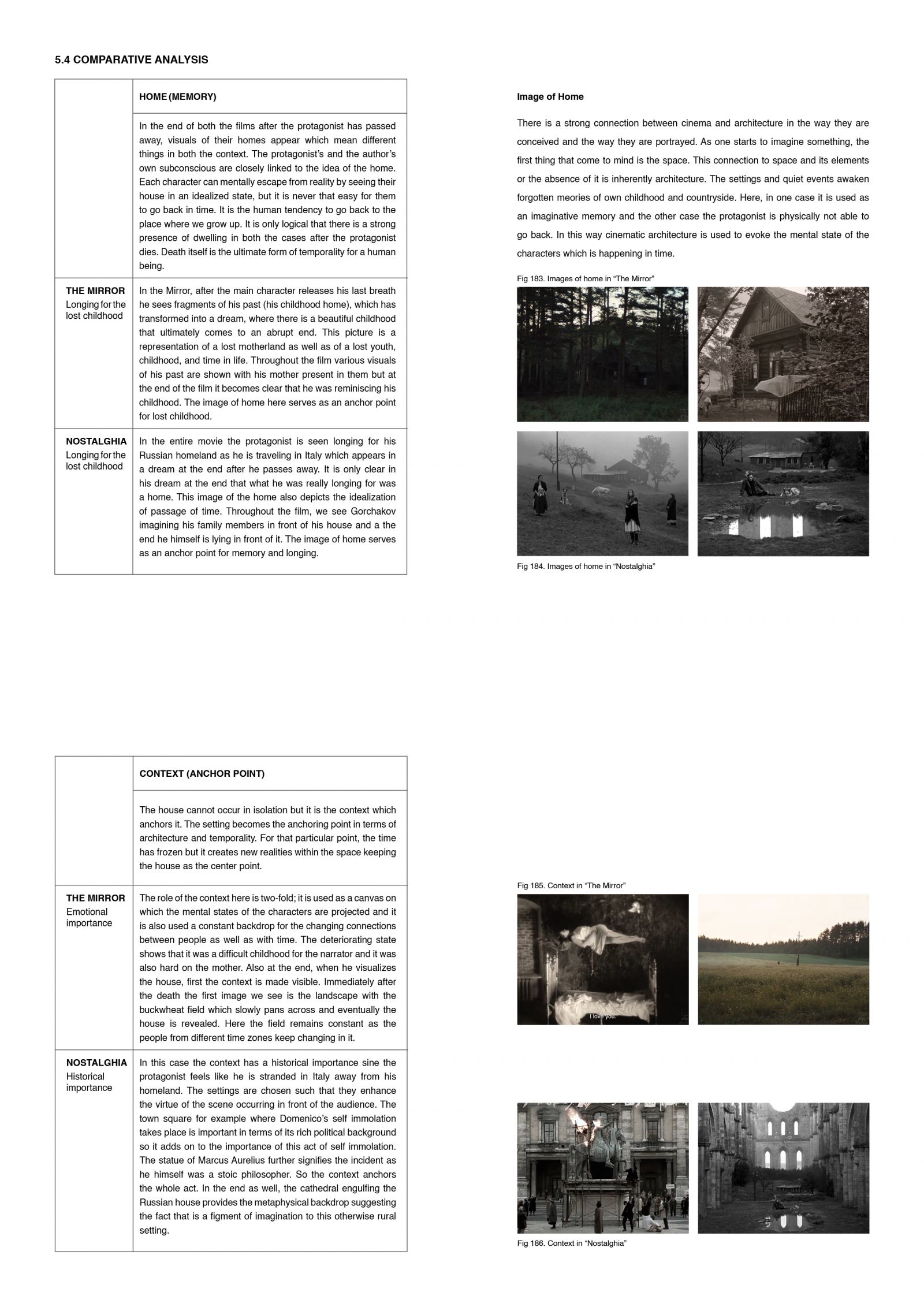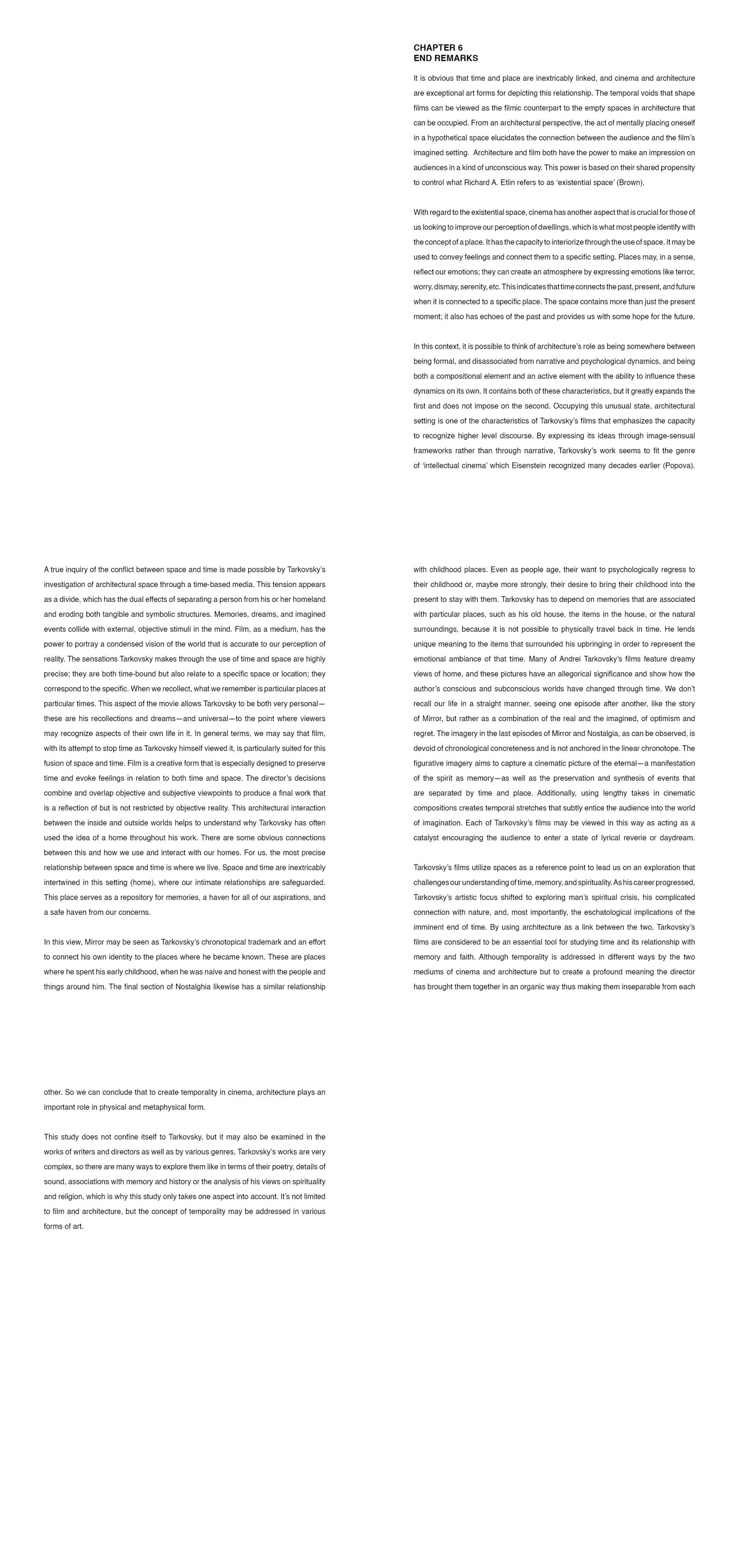Your browser is out-of-date!
For a richer surfing experience on our website, please update your browser. Update my browser now!
For a richer surfing experience on our website, please update your browser. Update my browser now!
Temporality in simple terms is the study and understanding of time. Time forms the basis of human existence and it is a subject which has always puzzled the human mind since we are unable to grasp it completely which makes us all the more curious to take control over it. Through centuries people have tried molding time however they saw fit, in art, literature, paintings, music and have done so by making references to the past or the future, or merging the two, creating non-linear timelines, using it in an abstract way, etc. However, cinema and architecture are unique art forms in the essence that they play with time in terms of the movement and experience they provide to the viewer. Time in cinema is non-linear, it can co-exist whereas in architecture, time is created temporally. The difference between the two art forms is that architecture can depict time by tactile and sensorial aspects such as by touching the building we can guess the age, for instance, the use of rough-hewn stone walls in medieval castles and fortresses suggests a bygone era, while the smooth and shiny surfaces of modern skyscrapers evoke a more contemporary feel. The scale and proportions can also evoke a sense of time and history, for e.g., grandiose scale of neoclassical architecture, with its large columns and pediments suggests the grandeur and power of ancient Rome. On the other hand, time in cinema is only sensorial and not tactile, so as to say we can feel the time passing but not experience it by touch. This research seeks to examine the temporal characteristics of films by focusing its attention on a particular Russian filmmaker Andrey Tarkovsky’s oeuvre and takes advantage of architectural elements in order to reveal manifestations of dreams, memories as well as movement. Time, as a fundamental constituent of Tarkovsky’s cinematic philosophy, is central to his artistic vision, with his films capturing the essence of time by depicting characters in a realistic setting, thereby revealing the truth of their existence through their environment. By performing an in depth analysis of two Tarkovsky movies, this study is attempting to establish a direct correlation between time and space.
View Additional Work






